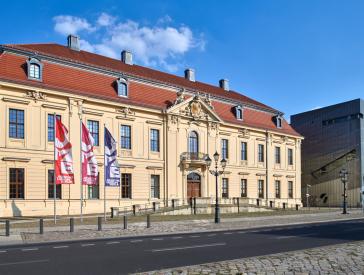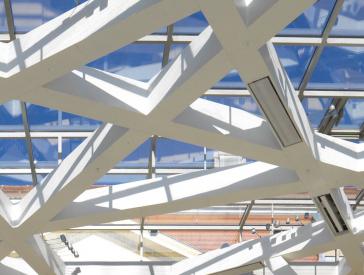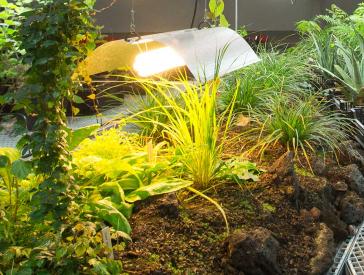Daniel Libeskind and the Baroque Era
The architecture of the Jewish Museum Berlin bears the distinctive fingerprints of Daniel Libeskind. The American architect designed the main museum building, but also the W. Michael Blumenthal Academy and the Glass Courtyard. The building compound also includes a baroque palace and a garden from the 1980s that is a protected landmark.
-

The Libeskind Building
With his “Between the Lines” design, American architect Daniel Libeskind did not want simply to design a museum building, but to recount German-Jewish history.
-

The Old Building
The former Collegienhaus is the last extant baroque palace in the historic Friedrichstadt neighborhood. The erstwhile Seat of the Royal Court of Justice is now the museum’s entrance with exhibition spaces on the upper level.
-

The W. Michael Blumenthal Academy
A former wholesale flower market was refurbished based on Libeskind’s In-Between Spaces design. With three cubes, the visual language echoes the architecture of the rest of the museum
-

The Glass Courtyard
The Glass Courtyard was designed by Daniel Libeskind, who drew inspiration from a sukkah (Hebrew for thatched hut). With a glass and steel structure, it covers the inner courtyard of the baroque Old Building.
-

The Diaspora Garden
The Diaspora Garden is located in the W. Michael Blumenthal Academy’s inner courtyard. Four “plateaus” that seem to be floating midair are planted with species related to Jewish life or with their own history of dispersion.
-

Our Museum Gardens
Behind the Old Building and around the Libeskind Building, two garden areas round out our grounds and allow our visitors to take a reflective break before and after their time in the museum.

